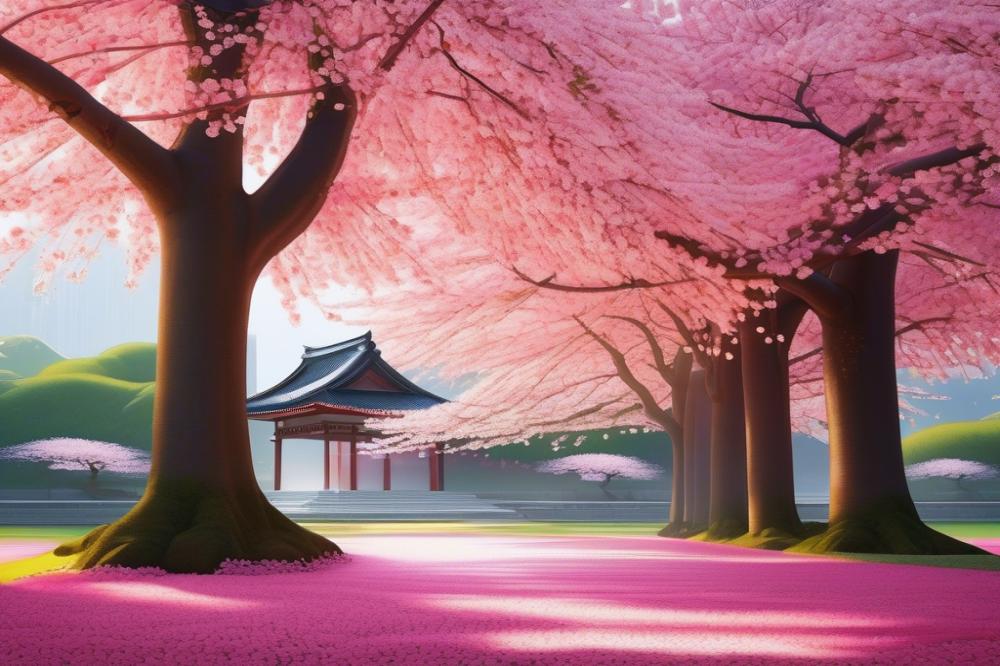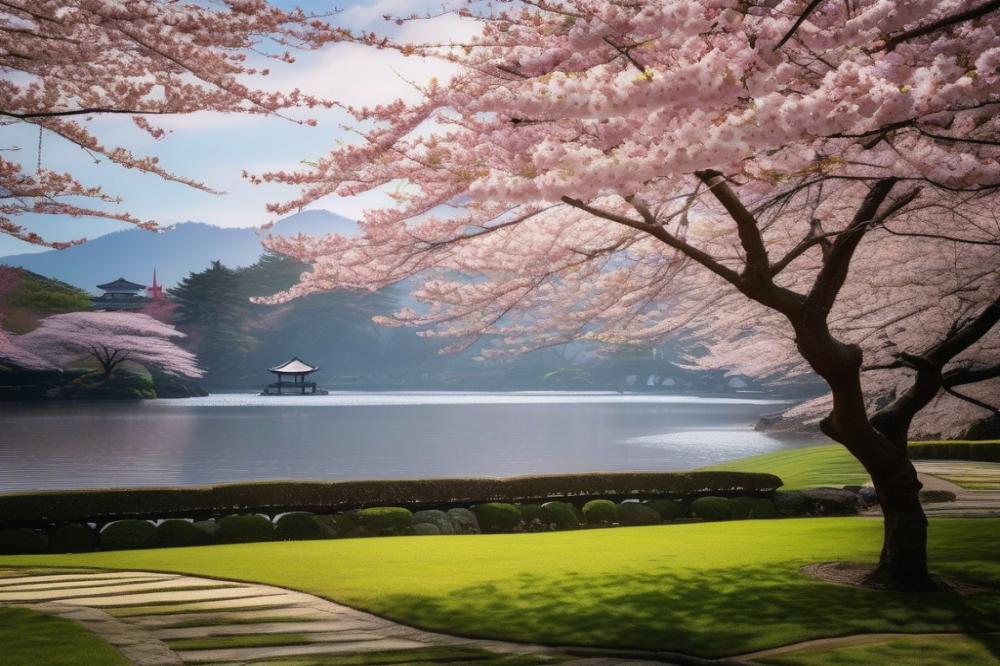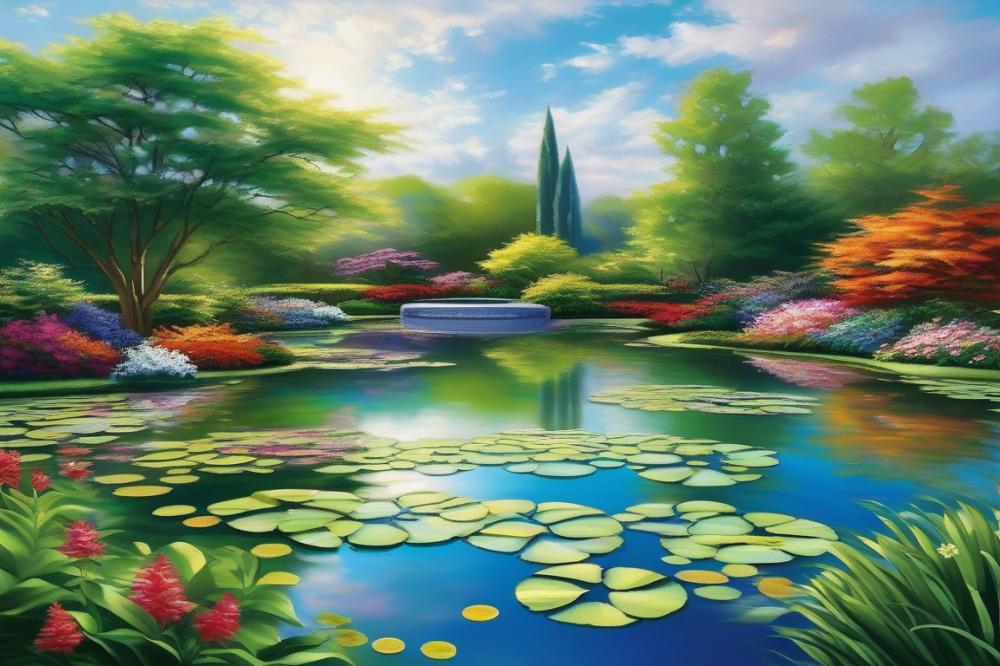Introduction
Cherry Blossoms, or sakura, hold a revered place in the heart of Japanese culture. These delicate flowers symbolize the transient nature of life, reminding us that beauty often exists in fleeting moments. Their stunning blooms transform landscapes each spring, inviting admiration and reflection.
In Japanese Gardens, the presence of Cherry Blossoms reflects deeper meanings tied to tradition and aesthetics. Many people gather under these pink petals during festivals, celebrating not just the arrival of spring, but the rich cultural heritage that accompanies it. The thoughtful integration of these blossoms into horticulture and landscape design showcases Japan’s appreciation for nature’s beauty.
Each spring, parks and gardens come alive with visitors eager to witness the seasonal beauty of sakura. These moments transcend the ordinary, as families and friends create memories while enjoying picnics beneath the blossoming trees. The act of coming together amidst these flowers is a cherished tradition that cultivates a sense of community.
The symbolism of cherry blossoms extends beyond mere beauty. These flowers resonate with themes of renewal and the impermanence of life. In many ways, the fleeting bloom serves as a reminder to cherish each moment. The vibrant aesthetics found in this natural spectacle not only enhance the tranquility of Japanese Gardens but also connect people to the cycles of nature.
Thus, as cherry blossoms bloom each year, they invite individuals to appreciate both their beauty and the profound cultural significance intertwined with them. Understanding their role in Japanese gardens reveals layers of meaning that enrich our connection to nature and our shared traditions.
The Historical Context of Cherry Blossoms


Origins of Cherry Blossoms in Japan
Sakura trees have a long history in Japan. These beautiful flowers are native to the region and have been admired for centuries. The earliest mentions of these blossoms can be found in ancient texts. They first bloomed not just as a lovely sight but as part of cultural rituals and nature worship.
Historical Significance in Ancient Culture and Imperial Gardens
Throughout history, cherry blossoms held great importance in ancient Japan. Emperors often created gardens filled with these trees to showcase their beauty and power. Many ancient poems and paintings feature the blossoms, reflecting their influence on the arts. They became a symbol of renewal and the fleeting nature of life. In imperial gardens, these trees represented elegance and tranquility.
Evolution of Horticulture Practices Surrounding Cherry Blossoms
Horticultural practices around sakura have changed over time. People began to cultivate different varieties, enhancing their beauty and color. Landscape design evolved to incorporate these trees into parks and gatherings. Various seasonal festivals now celebrate their blooming. These traditions draw people from all over, deepening their appreciation for the aesthetics of nature. The seasonal beauty of the blossoms serves as a reminder of life’s cycles and the importance of community, connecting people through shared experiences.
Symbolism and cultural significance


Sakura holds a special meaning in Japanese society. These delicate flowers embody the essence of renewal and the beauty found in seasonal changes. When cherry blossoms bloom, they create a breathtaking spectacle that captures the attention of both locals and visitors.
The symbolism linked to sakura extends beyond mere aesthetics. This beautiful flowering plant represents transience, reflecting life’s constant changes. Each blossom lasts only a short time, reminding us that beauty is often fleeting. Appreciating these flowers encourages a deeper connection to nature’s rhythms.
In Japan, traditions surrounding these blossoms showcase their cultural significance. Festivals during the sakura season draw people together for picnics and celebrations. Such gatherings highlight community bonds and shared appreciation for nature’s gifts. Observing cherry blossoms is more than just a visual experience; it is a moment to reflect on life itself.
This floral phenomenon inspires numerous art forms. Landscape design often incorporates these trees, enhancing the aesthetics of gardens and parks. Horticulture focused on cultivating sakura varieties demonstrates a deep-rooted respect for nature’s beauty while embracing its impermanence.
Moreover, the connection between sakura and concepts of life and death is profound. The quick life cycle of the blossoms encourages people to reflect on their own existence. Each petal that falls signifies a moment passed, highlighting the inevitability of change. Such lessons resonate deeply with individuals, prompting them to cherish every fleeting moment.
Clearly, the cherry blossom’s role in Japanese culture is rich and layered. The magic of sakura transcends mere decoration; it embodies life’s most important lessons. Embracing this symbol can lead to a greater understanding of our own places in the world.
Cherry Blossoms in Landscape Design


Integrating sakura in Japanese and zen gardens is not just about planting trees. It represents a deep cultural significance that resonates throughout the country. Gardens designed with these beautiful blossoms reflect both tradition and the art of horticulture. By thoughtfully placing cherry trees, designers create a sense of balance. Visitors can feel the weight of history and beauty all around them.
Aesthetic principles guide every design choice in these landscapes. Simplicity and naturalness are key themes. Each element, from rocks to water features, plays a role in enhancing the beauty of the sakura. These gardens aim to evoke feelings of peace and contemplation. The blooming trees serve as a reminder of life’s fleeting nature, adding depth to the scenery.
Creating harmony and tranquility in places where people seek solace is vital. Visitors often find themselves drawn to the gentle colors of cherry blossoms. Each spring, festivals celebrate their seasonal beauty, drawing crowds to experience this moment of bliss. In these spaces, nature speaks, allowing individuals to connect deeply with the environment. The dance of petals in the wind symbolizes renewal, reminding everyone to appreciate fragility.
Landscape design that incorporates these blossoms enhances a garden’s narrative. Each blooming cycle invites reflection on life’s impermanence. The deliberate arrangement of cherry trees often complements paths, ponds, and other features. This thoughtful layout encourages visitors to journey through the space while enjoying nature’s spectacle.
As spring unfolds, the sakura blossoms transform gardens into enchanting environments. Families and friends gather, sharing stories and laughter beneath the trees. The vibrant yet gentle hues bring joy, fostering a sense of community. In this way, cherry trees function as more than just plants; they are symbols of connection, celebration, and the beauty found in transience.
Festivals and Traditions


Hanami: Celebrations and Picnics Under Cherry Blossoms
Hanami is a cherished tradition in Japan, where people gather to appreciate the beauty of sakura. Families and friends spread blankets under the blooming trees. They enjoy meals, drinks, and laughter surrounded by the enchanting flowers. This custom emphasizes connection, as people come together in nature. Picnics under the trees become a time for reflection and joy.
Cultural Festivals Centered Around Sakura Blooming
Numerous festivals celebrate the arrival of sakura season. These events take place in parks and gardens and attract visitors from everywhere. Colorful stalls offer delicious food and traditional goods. Music and dance performances add to the excitement. Such festivals highlight the cultural significance of the blossoms, reminding everyone of their symbolism in areas like love and renewal. Each region hosts its own unique event, showcasing local customs and talents.
Impact of These Traditions on Community and Tourism
These traditions foster a strong sense of community. Neighbors come together to share experiences, deepening their connections. The seasonal beauty of sakura draws tourists from all over the globe. Many travel specifically to witness the stunning landscapes decorated in pale pink. Local economies benefit as restaurants and shops thrive during festival seasons. Ultimately, such events encourage appreciation for horticulture and landscape design. People leave with unforgettable memories and a deeper understanding of this important cultural practice.
Seasonal Beauty and Biodiversity
The arrival of sakura marks a special time in Japan. These blossoms are more than just beautiful; they symbolize the transient nature of life. As the seasons change, cherry blossoms become a highlight in Japanese gardens. Each spring, the vibrant pink and white flowers attract visitors. This seasonal beauty captivates both locals and tourists alike.
In these gardens, the relationship between sakura and other plants is important. Various flora complement the cherry trees. For instance, after the blossoms fade, irises and peonies often take their place. This careful arrangement showcases horticulture and thoughtful landscape design. By mixing different plants, gardens maintain a vibrant display throughout the year.
Festivals dedicated to cherry blossoms strengthen their cultural significance in society. Events invite people to admire these flowers in full bloom. Communities come together to celebrate traditions that honor nature’s beauty. These gatherings also promote ecological awareness. Understanding the role of cherry trees in their ecosystems helps protect them for future generations.
Japanese gardens encourage biodiversity. Each plant and tree plays a part in this ecological tapestry. A diverse environment fosters a rich assortment of life, including insects, birds, and other wildlife. These natural interactions enhance the overall aesthetics of the garden. They remind us of the delicate balance present in nature.
Final Thoughts
In summary, the multifaceted cultural significance of cherry blossoms is deeply rooted in Japanese society. These delicate flowers symbolize many important themes, from the beauty of nature to the fleeting nature of life. Each spring, they remind everyone to appreciate the temporary and precious moments we have.
The lasting impact of sakura on Japanese gardens and society is undeniable. These blossoms transform landscapes into stunning displays of pink and white, creating spaces that invite contemplation and joy. People gather to view them, fostering a sense of community and connection. Through their beauty, cherry blossoms tell stories of tradition and renewal.
Let us encourage everyone to take a moment to appreciate this plant and its meanings. Observing the blossoms not only brings joy but also offers an opportunity to reflect on life’s transitory nature. The next time someone sees them in bloom, remember their rich heritage and the messages they carry. Embrace the beauty and symbolism they embody. You might find a deeper appreciation for these remarkable flowers and all they represent.



